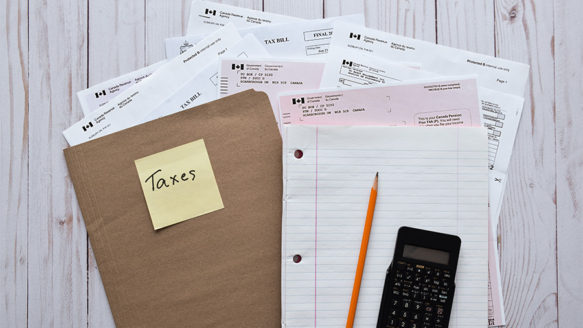
Ten Frugal Habits to Save Money
Let’s be real, saving money has always been difficult. But with inflation as high as it has been in over 40 years, saving money is becoming impossible for some. In this article, we’ve listed ten frugal habits to help you save money
In a recent study, the Angus Reid institute reported that 50% of Canadians couldn’t manage an unexpected expense of $1000 or more. In the same study, when Albertans were asked what they would do with a surprise bonus or gift of $5000, 46% said they would use it to pay down debt. Only 41% said they would put it in savings or invest it.
“Habits are like the atoms of our lives, each one is a fundamental unit that contributes to your overall improvement” – James Clear, Atomic Habits
Habits are powerful. They help us take a systematic approach and break big goals down into manageable chunks. Certain habits may be more important to you. Pick 3-4 that connect with you and try implementing them over the next few months.
Let us know how you get on!

- Track Spending
- Automate Your Savings
- Save Loose Change
- Compare Prices & Comparison Shop
- Avoid Spending Triggers
- Shop Second Hand
- Save Windfall Income & Use a Spending Rule of Thumb
- Institute a Waiting Period
- Calculate the Cost of the Item in Hours Worked
- Be Content with What You Have
It may seem obvious, but the only way to start saving money is to know where your money is going and track spending. If you only implement one habit from this list, start here. The simple step of understanding how much money you are spending can have a sizable impact on how much you save.
The best way to track your spending is to choose a timeframe. Some people like to track their spending daily, others choose to track their spending week by week, with a few people opting to track their spending monthly. We’d recommend doing all three, because why not?

Make it a habit to automate your savings. This habit is sometimes called “pay yourself first” and is a useful way of automating your savings. It puts saving money at the top of your priority list by making it the first thing you do with your paycheck. Even if you are only paying yourself an amount as low as $20 a month, it’s still something, and will put you in a money-saving mindset.
Make sure you have a separate bank account for your savings. By separating your bill-paying account and your savings account, you can set up an automated deposit and forget about the accumulated savings until you need them.
In today’s increasingly cashless society, loose change is becoming a rare commodity. Why not try using cash and then make a habit to save loose change and put it in a jar or piggy bank. It’s surprising how quickly it can add up. Loose change is usually money you aren’t tracking. It isn’t visible on your banking apps or on your statements, so it’s money you sometimes forget you have. Start saving it and see how quickly it adds up.
An important method to save money is to compare prices and comparison shop before you purchase an item. It’s too easy to buy things these days. With next-day-delivery and one-click-to-pay, purchasing items is fast becoming a frictionless activity. A good way to save money and cut back on spending is to add a bit more friction between you and that shopping cart, real or virtual.
Consider the 3-step approach to shopping.
Step 1 – Research the item online and compare the item across different online stores
Step 2 – Conduct a research trip: visit the shops near-by and see how much the item is in-store, maybe there is a sale on.
Step 3 – After completing your research, visiting local stores and comparing different retailers, if you still want the item then you can now purchase it.
There are many things that can trigger a spending spree, from sales and special deals to mental states such as boredom or stress. As with our first habit of tracking your spending, an important habit here is tracking your triggers.
Become mindful of your mental state before you make a purchase. What caused you to make your last purchase? Was it an impulse-buy in the gas station? Were you feeling bored and decided to head to the mall?
Shopping for bargains at garage sales or thrift stores can become a fun and engaging activity. Shopping online is quick and easy, but it’s over so quickly. Close the laptop, put down your phone, and head into town to see if you can find what you’re looking for at a second-hand shop.
If that’s not convenient for you, then why not shop second hand on a website such as Kijiji. You can find pretty much anything on there, often at a fraction of the retail price. Watch out for shipping costs if you are having something delivered.
Windfall income is an unexpected gain or spike in earnings and can include things like lottery winnings, birthday money, tax-rebates, or bonuses at work. Essentially, any income you receive that is surplus to your expectations.
In an ideal world, all of your surplus earnings should be saved. But if that’s not feasible you could look at implementing a spending rule of thumb:
• The 50% Rule: Save half, spend half.
• The Rule of 3: Save a third, spend a third, apply a third to debt.
This was an important step in a previous blog post of ours on avoiding buyers’ remorse. Similar to conducting research before you make a purchase, instituting a waiting period allows you to put some friction between yourself and buying an item.
During this waiting period, consider asking yourself these questions:
• Will this purchase meet one of my goals?
• Do I really need it?
• Can I afford it?
• Am I buying this only because it’s on sale?
• Would I buy this if I had to pay cash?
• Would I come back tomorrow to buy this?
• How much do I owe on my credit card this month?
• If I charge this, can I pay off this month’s bill?
• Could I feel better now without spending money?
Thinking about how many hours you need to work in order to purchase an item is a great way to check whether you really want the item or not. There are ways to make more money, but you only have a set amount of time – so spend it wisely!
Conduct a cost versus benefit analysis. For example, is the benefit you’ll receive from a new AppleWatch really worth a full week of work?
Our consumer-driven society is great at convincing us that we can make up for something we lack by purchasing the newest, shiny gadget or going out for a big fancy meal. There is a multi-billion dollar industry aimed at making you feel like you are not enough until you’ve bought some product or used some service.
A great way to save money is to realize what’s going on here. Understand that there are ways to feel content that don’t involve buying things. Go for a walk, read a book, meet up with a friend. Check out this post if you are looking for some ways to have fun on a budget.
Break the Spending Cycle

Hopefully you found some of the points in this article to be helpful. We understand how difficult it is to stop spending and save money, so we created a course on the subject. These 10 habits came from our popular free online course Break the Cycle: Spend Less & Save More.
Thanks for reading!
Have questions?
Need more information or want to talk to an accredited financial counsellor for peace of mind? Let us help.
Call 1-888-294-0076 or book an appointment. It’s free for all Albertans.






